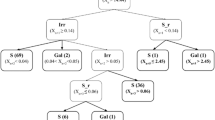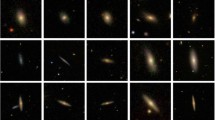Abstract
Since the beginning of space exploration, the galaxy classification has been a vexing problem that has always muddled the astrophysicists. A number of techniques have proven their remarkable utility in the classification of galaxies, however, upon analysis, these methods revealed certain inefficiencies that cannot be overlooked. The traditional classification of galaxies in the universe contains a significant part of their history in the authority of government agencies where the classifications in the previous years were performed primarily by experts manually. Today’s astronomical research produces large amounts of data and manually labelling the galaxy images based on morphological features can be time-consuming and error-prone. The objective of this paper is to study and analyze the different types of machine learning methodologies used for classifying galaxies. An inference drawn from this study is that using deep learning algorithms in conjunction with some data augmentation techniques provide excellent classification results of galaxies. Considering the aforementioned fact, the authors have proposed a layered CNN based classification model along with certain data augmentation techniques to classify galaxies morphological. “The Galaxy Zoo” dataset has been used from Kaggle which is further handcrafted for ease of classification. The galaxies are classified into three classes: spiral, elliptical, and lenticular (somewhere in-between). It has been observed from the experimental work that the proposed model outperform than its earlier contemporaries and can be used effectively to classify the galaxies.








Similar content being viewed by others
References
Abd Elfattah M, El-Bendary N, Abu Elsoud MA, Hassanien AE, Tolba MF (2013) An intelligent approach for galaxies images classification, in 13th International Conference on Hybrid Intelligent Systems (HIS 2013), pp 167–172
Abd Elfattah M, Elbendary N, Elminir HK, Abu El-Soud MA, Hassanien AE (2014) Galaxies image classification using empirical mode decomposition and machine learning techniques, in 2014 International Conference on Engineering and Technology (ICET), pp 15
Baillard A et al. (2011), The EFIGI catalogue of 4458 nearby galaxies with detailed morphology, Astronomy & Astrophysics, vol 532, id.A74, 27
Ball NM, Brunner RJ, Myers AD, Tcheng D (2006) Robust Machine Learning Applied to Astronomical Data Sets. I. Star-Galaxy Classification of the Sloan Digital Sky Survey DR3 Using Decision Trees. Astrophysical J 650:497–509. https://doi.org/10.1086/507440
Brunner RJ, Kim EJ (2017) Star-galaxy classification using deep convolutional neural networks. Monthly Royal Astronomical Soc 464:4463–4475
Calleja J, Fuentes O (2003) Machine learning and image analysis for morphological galaxy classification
De La Calleja J, Fuentes O (2004) Machine learning and image analysis for morphological galaxy classification. Mon Not R Astron Soc 349(1):87–93
Djorgovski S, Davis M (1987) Fundamental properties of elliptical galaxies. Astrophys J 313:59–68
Djorgovski SG, Donalek C, Mahabal A, Williams R, Drake AJ, Graham MJ, Glikman E (2006) Some pattern recognition challenges in data-intensive astronomy. In 18th international conference on pattern recognition (ICPR'06). IEEE 1:856–863
Doi M, Fukugita M, Okamura S (1993) Morphological classification of galaxies using simple photometric parameters. Mon Not R Astron Soc 264(4):832–838
Eisenstein DJ, Weinberg DH, Agol E, Aihara H, Prieto CA, Anderson SF et al (2011) SDSS-III: massive spectroscopic surveys of the distant universe, the milky way, and extra-solar planetary systems. Astron J 142(3):72
Elmegreen DM, Elmegreen BG (1987) Arm classifications for spiral galaxies. Astrophys J 314:3–9
Galaxy Zoo project(2014) Galaxy Zoo dataset from https://www.kaggle.com/c/galaxy-zoo-the-galaxy-challenge/data
Goderya SN, Lolling SM (2002) Morphological classification of galaxies using computer vision and artificial neural networks: a computational scheme. Astrophys Space Sci 279(4):377–387
Habibi Aghdam H, Jahani Heravi E (2017) Guide to Convolutional Neural Networks. Cham: Springer International Publishing.
Kasivajhula S, Raghavan N, Shah H (2007) Morphological galaxy classification using machine learning. Mon Not R Astron Soc 8:1–8
Kelly BC, McKay TA (2004) Morphological classification of galaxies by shapelet decomposition in the Sloan digital sky survey. Astron J 127(2):625
Lahav O, Nairn A, Sodré L Jr, Storrie-Lombardi MC (1996) Neural computation as a tool for galaxy classification: methods and examples. Mon Not R Astron Soc 283(1):207–221. https://doi.org/10.1093/mnras/283.1.207
Lintott C, Schawinski K, Bamford S, Slosar A, Land K, Thomas D, Szalay A (2011) Galaxy zoo 1: data release of morphological classifications for nearly 900 000 galaxies. Mon Not R Astron Soc 410(1):166–178
Marin MA, Sucar LE, Gonzalez JA, Diaz R (2013a) A hierarchical model for morphological galaxy classification. In The Twenty-Sixth International FLAIRS Conference
Marin M, Sucar LE, Gonzalez JA, Diaz R (2013b) A Hierarchical Model for Morphological Galaxy Classification, in Proceedings of the Twenty-Sixth International Florida Artificial Intelligence Research Society Conference, pp 438–443
Perez L, Wang J (2017) The effectiveness of data augmentation in image classification using deep learning. arXiv preprint arXiv:1712.04621
Raicu I, Foster I, Szalay A, Turcu G (2006) Astroportal: a science gateway for large-scale astronomy data analysis. In: Teragrid conference. pp 12-15
Sifre L, Mallat S (2013) In: Gerard M, Ramin Z (eds) Proc. IEEE Conf. On computer vision and pattern recognition (CVPR), rotation, scaling and deformation invariant scattering for texture discrimination. IEEE, New York, p 1233
Spiekermann G (1992) Automated morphological classification of faint galaxies. In: HT MG, Thomson EB (eds) Digitised optical sky surveys. Astrophysics and space science library (a series of books on the recent developments of space science and of general geophysics and astrophysics published in connection with the journal space science reviews), vol 174. Springer, Dordrecht
Storrie-Lombardie MC, Lahav O, Sodre L, Storrie-Lombardie LJ (1992), Morphological Classification of Galaxies by Artificial Neural Network
Valentijn EA (1990) Opaque spiral galaxies. Nature 346(6280):153–155
Van den Bergh S (2009) Lenticular galaxies and their environments. Astrophys J 702(2):1502
Van Dyk DA, Meng XL (2001) The art of data augmentation. J Comput Graph Stat 10(1):1–50
Weir N, Fayyad UM, Djorgovski S (1995) Automated star/galaxy classification for digitized POSS-II. Astron J 109:2401
Willett KW, Lintott CJ, Bamford SP, Masters KL, Simmons BD, Casteels KRV, Edmondson EM, Fortson LF, Kaviraj S, Keel WC, Melvin T, Nichol RC, Raddick MJ, Schawinski K, Simpson RJ, Skibba RA, Smith AM, Thomas D (2013) Galaxy zoo : detailed morphological classifications for 304 122 galaxies from the Sloan digital sky survey. Monthly Notices Royal Astronomical Soc 435(4):2835–2860. https://doi.org/10.1093/mnras/stt1458
Wong SC, Gatt A, Stamatescu V, McDonnell MD (2016) Understanding data augmentation for classification: when to warp?. In 2016 international conference on digital image computing: techniques and applications (DICTA) (pp 1-6). IEEE
Xu Y, Jin Z (2008). Down-sampling face images and low-resolution face recognition. In 2008 3rd international conference on innovative computing information and control (pp 392-392). IEEE
Zhang Y, Zhao D, Zhang J, Xiong R, Gao W (2011) Interpolation-dependent image downsampling. IEEE Trans Image Process 20(11):3291–3296
Zhou DX (2020) Theory of deep convolutional neural networks: Downsampling. Neural Netw 124:319–327
Zooniverse (n.d.) The science behind the site. https://www.zooniverse.org/projects/zookeeper/galaxy-zoo/about/research
Funding
The authors received no funding for this work.
Author information
Authors and Affiliations
Corresponding authors
Ethics declarations
Conflict of interest
The authors declare that there is no conflict of interest.
Additional information
Communicated by: H. Babaie
Publisher’s note
Springer Nature remains neutral with regard to jurisdictional claims in published maps and institutional affiliations.
Rights and permissions
About this article
Cite this article
Goyal, L.M., Arora, M., Pandey, T. et al. Morphological classification of galaxies using Conv-nets. Earth Sci Inform 13, 1427–1436 (2020). https://doi.org/10.1007/s12145-020-00526-w
Received:
Accepted:
Published:
Issue Date:
DOI: https://doi.org/10.1007/s12145-020-00526-w




